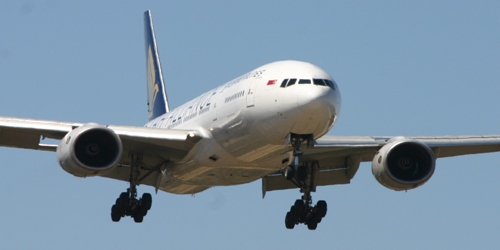Asiana 214's Stall Warning
09 July, 2013
4 min read


Scant seconds before Asiana Flight 214’s tail struck the seawall at San Francisco International Airport the crew got a visceral warning of what might happen unless they added life-giving speed: the “stickshaker” started ominously vibrating in the pilot’s hands, emitting an impossible-to-ignore rattling sound, the sound indicating an incipient stall if the pilot didn’t take immediate corrective action.
So, just what is a stall? What are the aerodynamic principles behind the lift-killing phenomenon?
Wings work wondrously, and the end product is something called lift -- the most elemental of forces, the phenomenon upon which rests all aeronautical laws and prophesies.
Early aviators reasoned they could loft a machine into the heavens by curving the top of its wing. Air passing over the arched upper surface had to travel farther, and thus faster, than the air passing beneath. Fast air “weighs” less than slow air. That’s because its molecules are spread out. The wing is literally sucked up into lower pressure above, while being nudged up by the higher pressure below. That’s the essence of lift, something spelled out nicely in a law of physics called Bernoulli’s Principle.
Lift is lovely. But it’s perpetually at war with drag. Lift gets us off the ground. Drag seeks to tether us to it. Drag is a combination of forces: friction, gravity and downward air pressure. When it dominates, bad things can happen. At worst, airplanes can fall from the sky.
Lift increases with how sharply the airfoil (another term for the wing) is angled into the air. But the principle works only just so far. Beyond an angle of about15 degrees, the airflow over the upper surface of the airfoil separates from the wing itself. What was a smooth, lift-producing flow becomes a turbulent, roiling cauldron and the wing “stalls.” The upwards suction disappears!
To restore lift, you can push the nose of the airplane over and gain airspeed. Asiana 214 was too low at the time to do this. All the pilot could do is try to restore lift-giving speed is to push the power levers (a.k.a. “throttles”) up. But the engines take a few seconds to spool up to full power and time had tragically disappeared - along with altitude.
To prevent a stall from happening in the first place, to allow airplanes to climb more steeply, and fly at slower speeds, designers begat flaps on the trailing edge (the rear), and slats on the leading edge (the front) of the wing. Both extend the curvature of the wing. But even that has its limits. Keeping an airplane aloft requires a requisite amount of speed. Absent that, an aircraft can sink too fast of simply stall out. It appears the 777 did the former. Just before impact the Triple-Seven was traveling far below its targeted approach speed. According to the crash investigator the US NTSB the Asiana 777 was travelling 34 knots or 39m/hr (62km/hr) below its target speed at its slowest point just before impact. At impact it had gained just 3 knots.
Back to the physics of it all for a moment: slats are critical at takeoff and landing, when an aircraft has to gain altitude at a steep angle while flying relatively slowly, or descend – nose canted slightly up – and maintain lift at the same time.
The MD-80 was one of the first aircraft fitted with an automatic slat extension feature that gives pilots a greater margin for error. Ralph Brumbry, once a designer on the MD-80 project, said, “When slats are in the mid-extension position and, for any reason, you should slow down or approach stall, the change is sensed [by computers] and the slats open automatically to their full extension.” When the MD-80 gasps for a smooth gulp of lift it’s there – instantly and automatically.
On takeoff, flaps are normally pitched between 10 and 20 degrees below the plane of the wing. On landing – when you want to go slower (but not too slow) – it can vary between 30 and 45 degrees.
Together, slats and flaps sculpt the air, augmenting the gravity-defying lift bequeathed by the wing itself. But even they need a minimum amount of airspeed to make the magic work.
Get the latest news and updates straight to your inbox
No spam, no hassle, no fuss, just airline news direct to you.
By joining our newsletter, you agree to our Privacy Policy
Find us on social media
Comments
No comments yet, be the first to write one.

